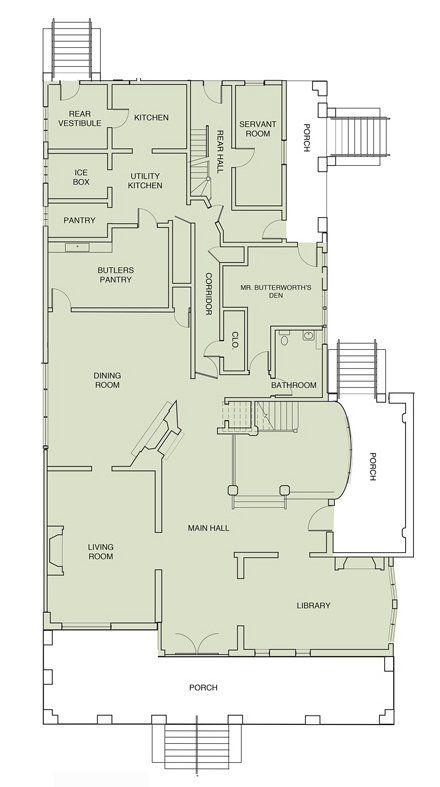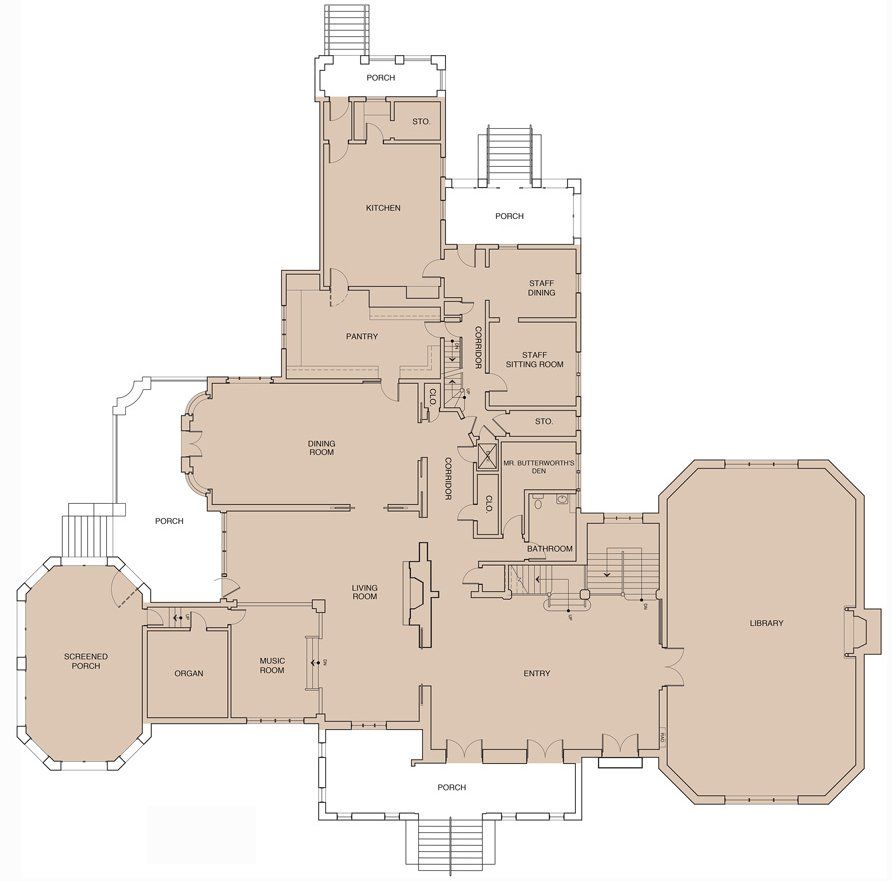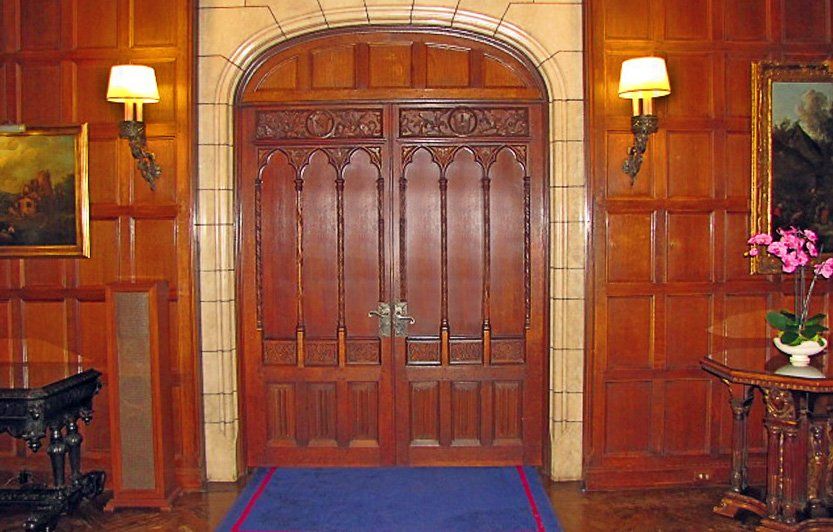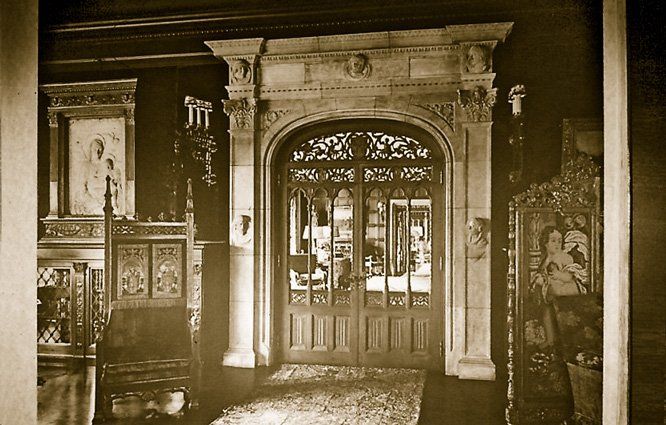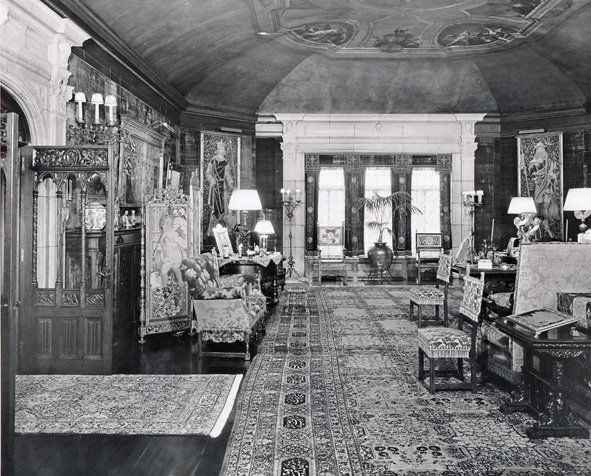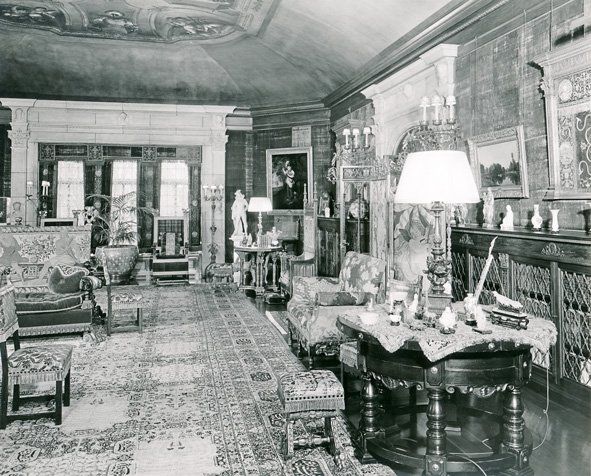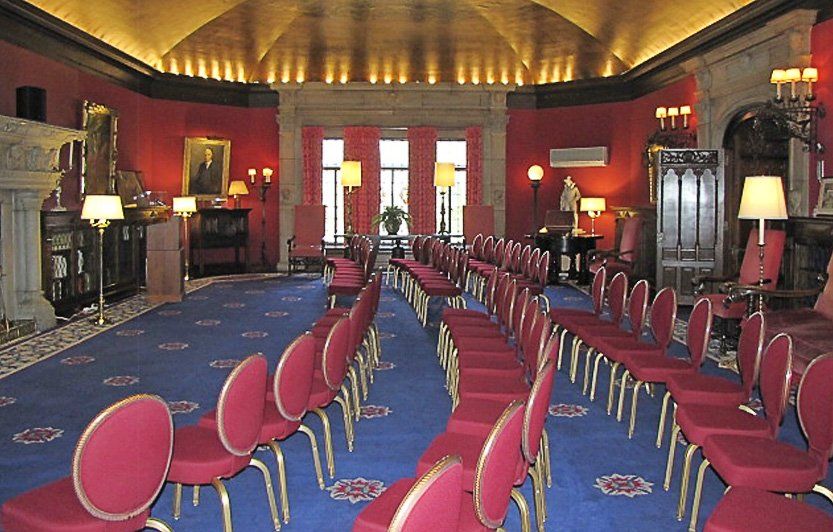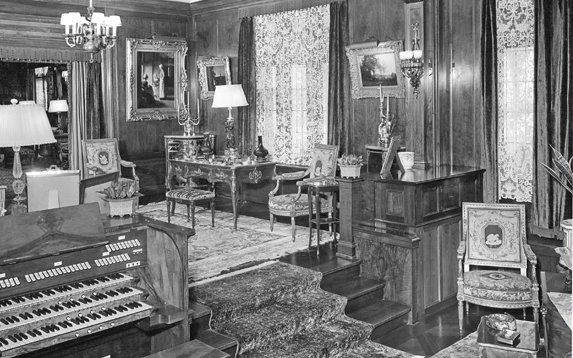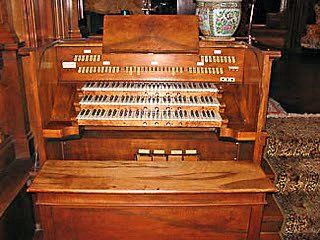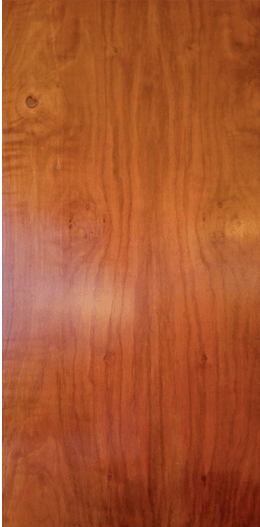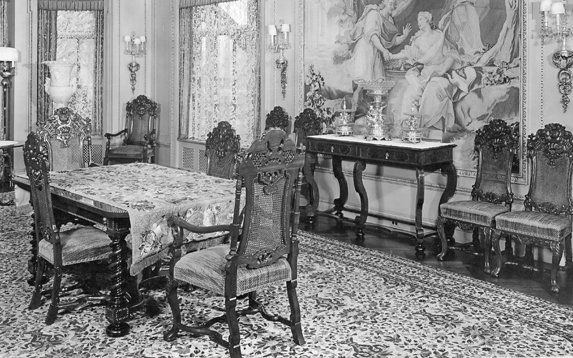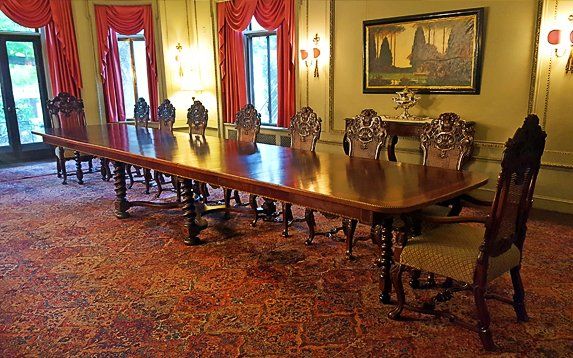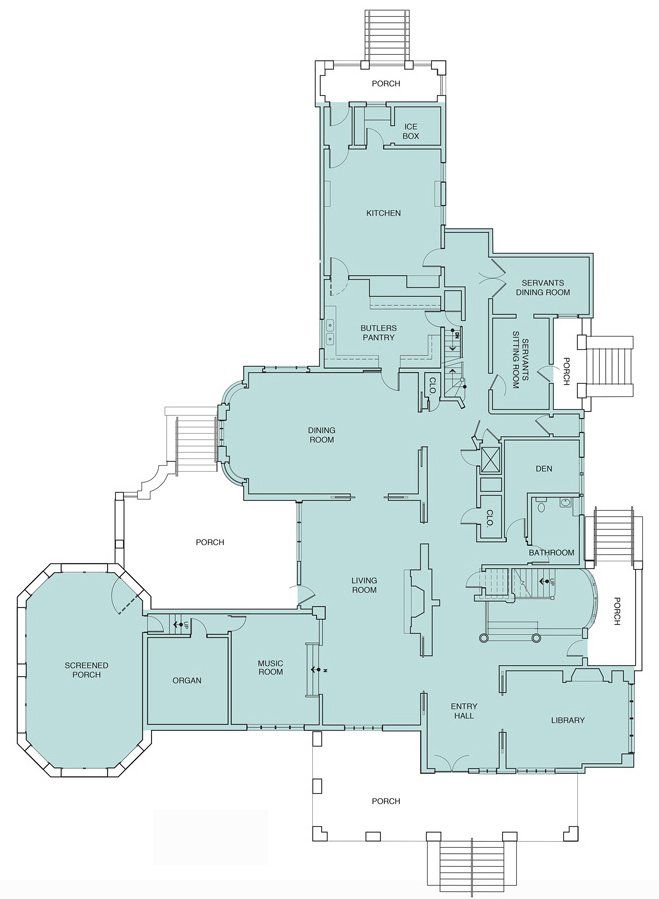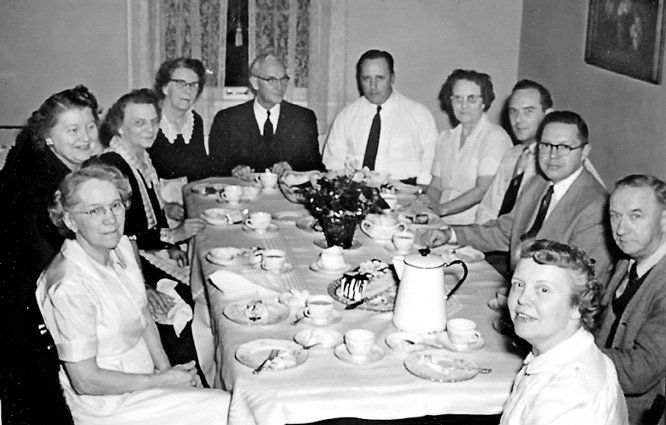The wood paneling in the Living Room is called Circassian Walnut, also known as English Walnut. Circassian Walnut, originating from Asia, was sought after in American and European furniture markets. Well established in Europe by the middle ages, the wood became a favorite timber for furniture.
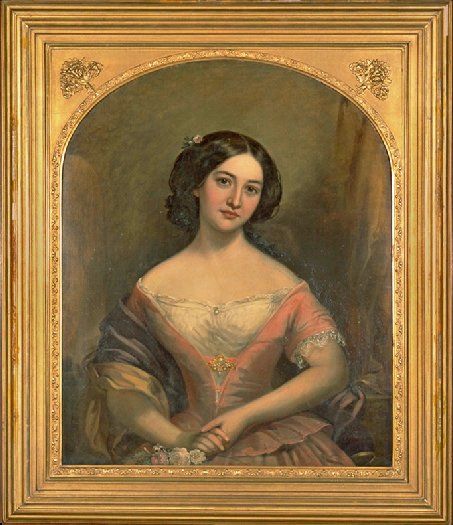
Who is this enchanting young woman? The Butterworths collected items of great quality and beauty. This portrait was a gift from a relative; and though the subject is not related to the family, her portrait fit perfectly in the home.
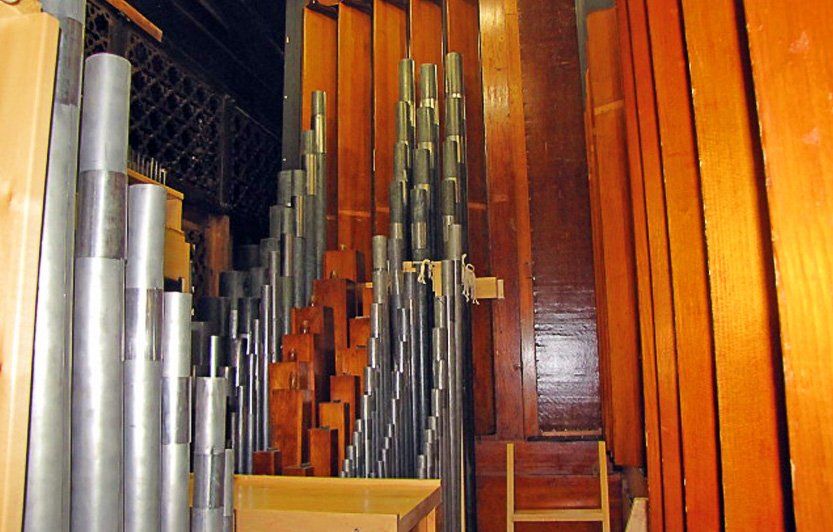
This magnificent instrument, manufactured in Rock Island, Illinois, by the Bennett Organ Company, was installed in 1909. The 26 ranks of pipes rest behind Gothic woodwork, with an additional echo chamber above the stairway to the third floor. Though Mr. and Mrs. Butterworth could both play the piano and organ, a player attachment was added in the 1910s, allowing the organ to be used for entertainment at parties. At the time of installation, it was one of the largest residential organs in the Midwest.
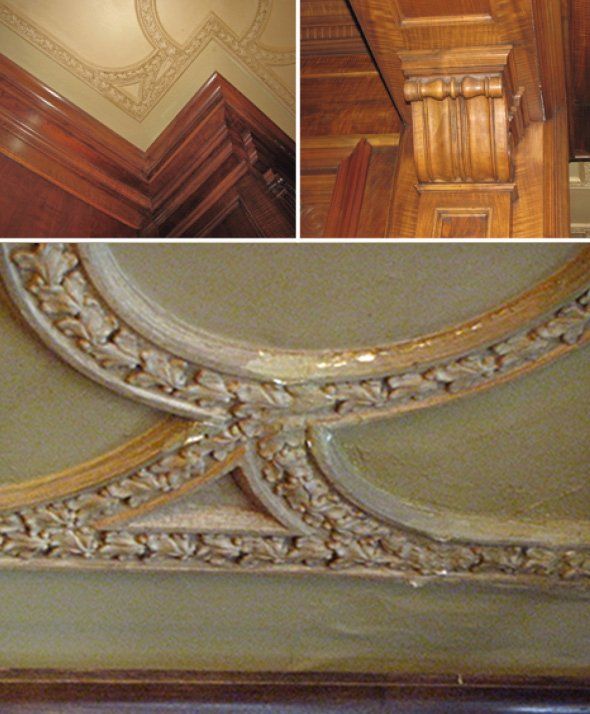
Today’s living room showcases the talents of master plasterers and wood carvers.
hidden support legs and ten removable leaves. It can be sized for an intimate meal for two to four up to 19 place settings for a grand dinner party. See the intricate details (below) and the video (next bar) showing the table and its original chairs expanded to full size.
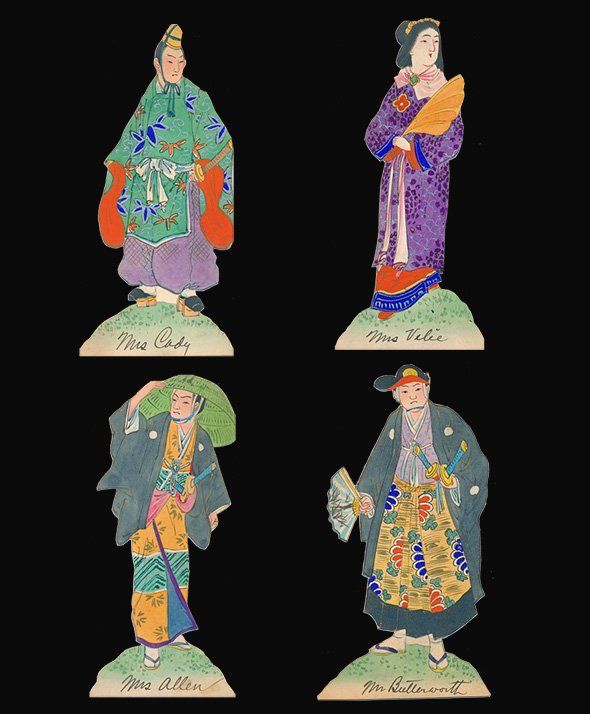
The Butterworths hosted many dinner parties at their residence. These unique dinner cards represent four attendees from a 1910s dinner party: Mr. Butterworth, Mrs. Velie, Mrs. Allen, and Mrs. Cady.
Which dinner card is your favorite?
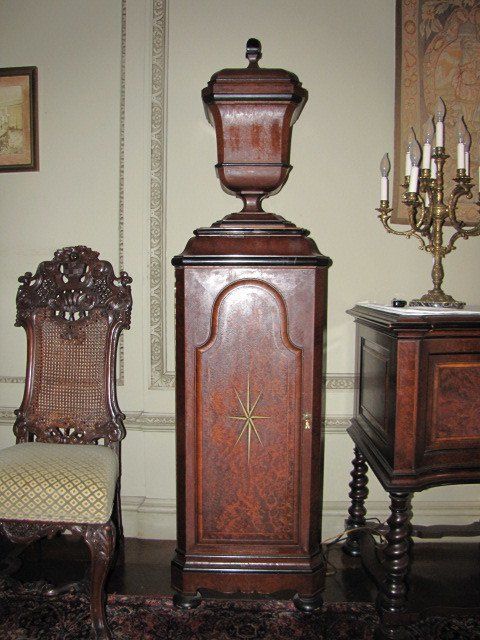
A special feature in the dining room, are the knife boxes sitting atop a pair of wood stands. Knife boxes originally would only have existed in the upper echelons of society in late 18th and early 19th centuries. There were two forms of knife or cutlery boxes made by Adam, Hepplewhite, Sheraton and others. The urn-shaped box with a lift-up lid is much rarer. The more common form is a sloping mahogany box, serpentine shaped in front, with divisions for holding cutlery.
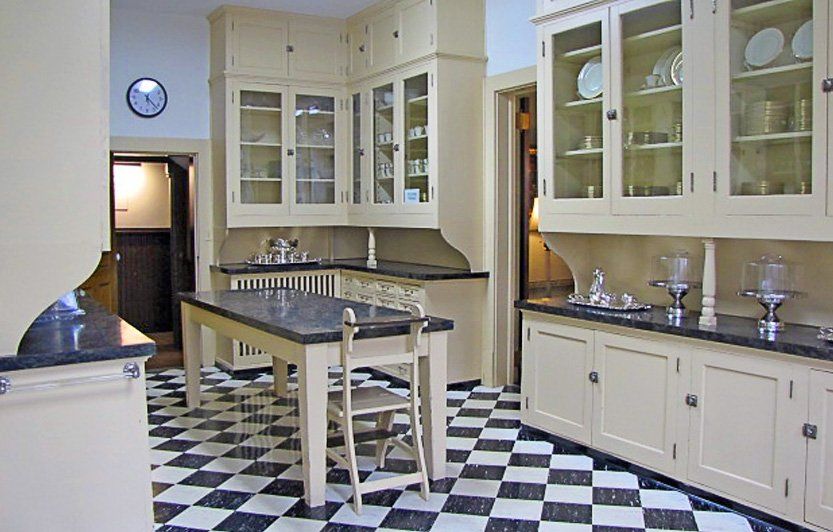
Slide title
Write your caption hereButton
Slide title
Write your caption hereButton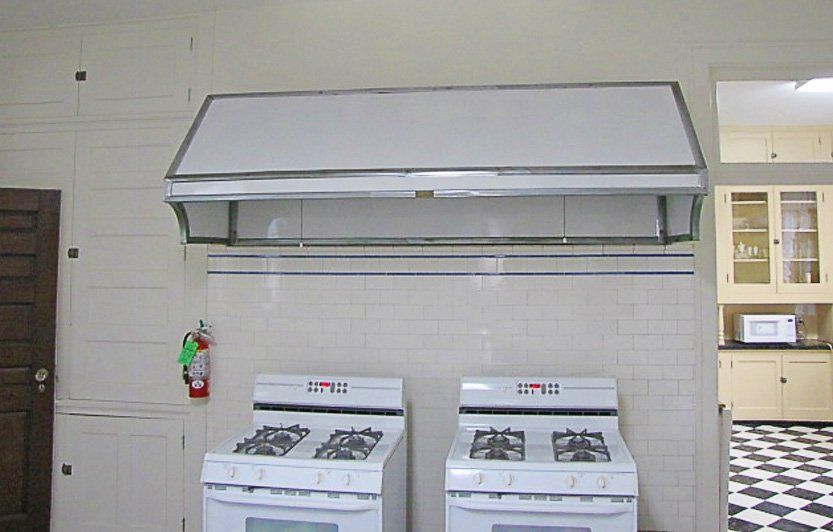
Slide title
Write your caption hereButton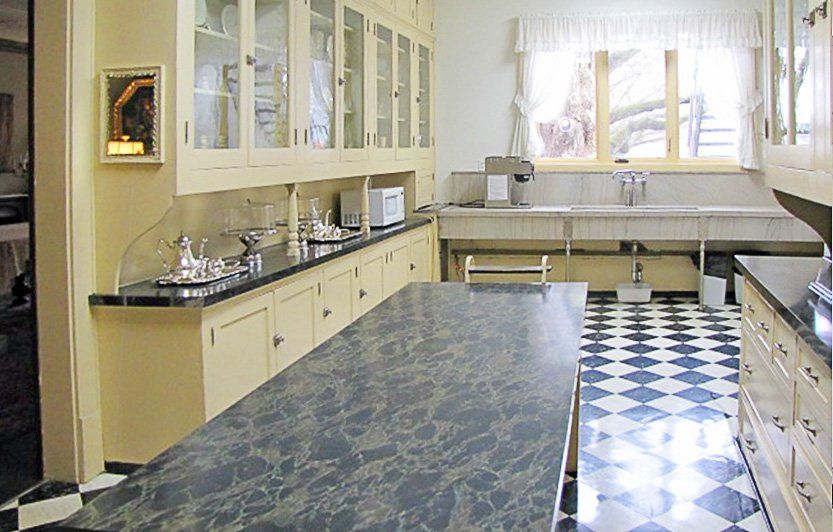
Slide title
Write your caption hereButton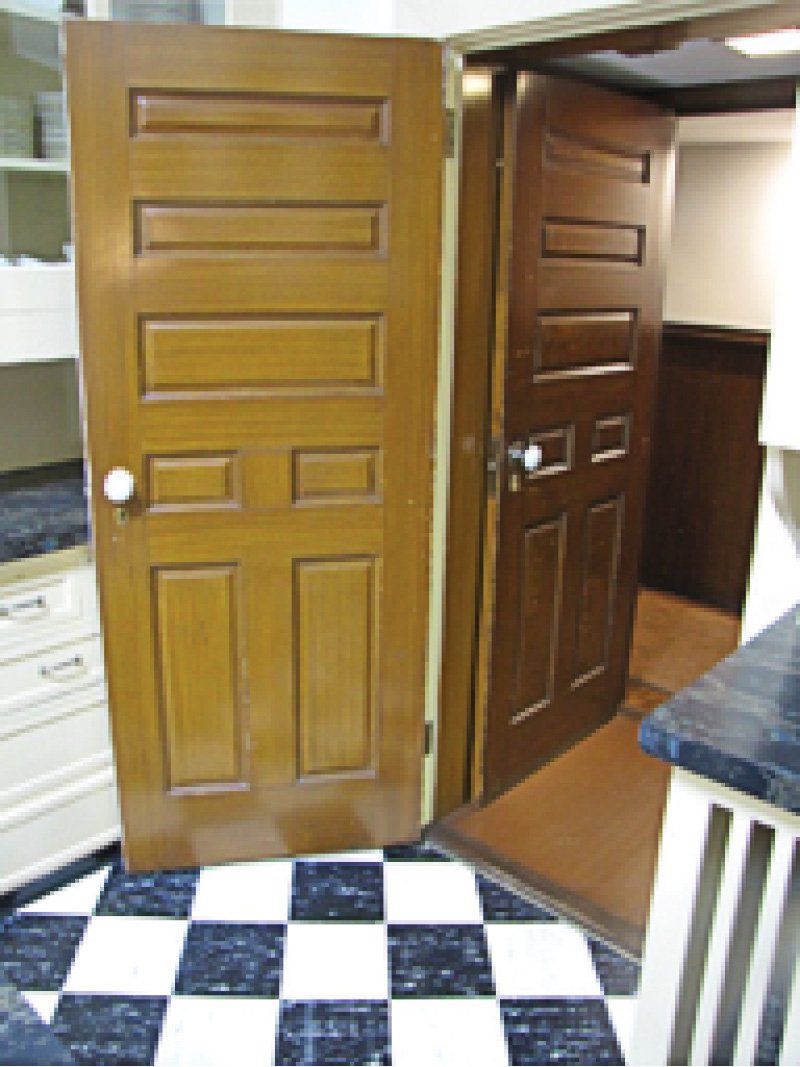
Slide title
Write your caption hereButton
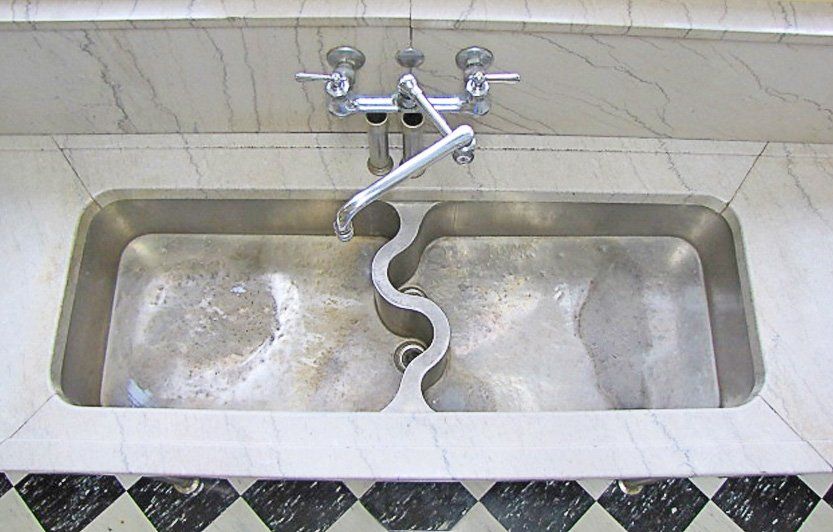
Made in Germany, the unique divided sink is a trademark style of the “German Silver Sink”.
brand. German Silver is made from a combination of copper, nickel, and zinc, a metal combination that provides a surface that leads to less breakage. This sink model was designed specifically to wash crystal and china and was most commonly found in a Butler’s Pantry.
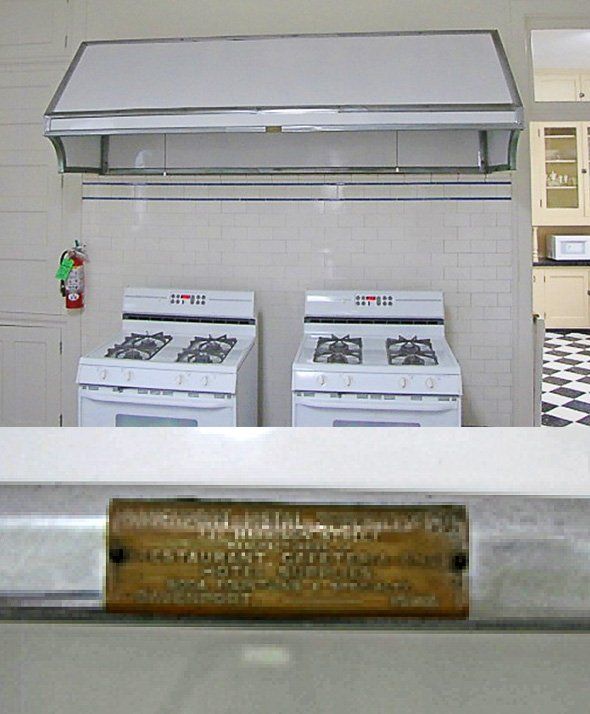
The grill hood was installed between 1922 and 1925 by the Davenport Metal Specialty Company, a manufacturer of restaurant, cafeteria, and soda fountain equipment for hotels founded by local brothers Fred and Albert Uchtdorff. After three years, however, Albert left the company and Fred founded Uchtdorff and Wieser Company, which was later called the Uchtdorff Company. During World War II, the Uchtdorff workforce was made up of one-third women who worked up to 60 hours a week. These workers were part of the female war effort movement called “the soldiers in the production of freedom.”
All Rights Reserved | William Butterworth Foundation
